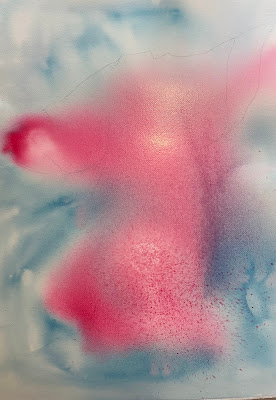One of the things that motivates me in creating art is working in a series. I enjoy thinking of many ways to talk about the same theme using different ideas. Going out to the studio I don't have to think of what to paint, I have to think of how to express the different elements of my theme.
As I said in my last post, my current work is all about the small pond just outside my art studio.
I have been working on my third "Kimono in the pond" painting. Why putting clothing in the water? There are many influences behind this, but one is how the beauty of nature influences our fabrics. I like to think of the water plants and gold fish floating onto the silks of a Kimono, decorating the fabric. I also have a respect for and fascination of Japanese art. (An aside: the Kimono is a symbol of longevity and good fortune.)
Maybe these paintings are a reflection of my admiration of Monet with this waterlilies and Matisse who collected fabrics and used the patterns in many of his paintings.
So this third Kimono painting my goal was to place the clothing under the water instead of on top of the water. It started as a watercolor painting then evolved into a mixed medium using acrylic paint to put the water on top. Below you can see the development of this piece
 |
| After taking the whole piece into my big sink, I softened all the colors. Next I protected the areas that would become waterlily pads and goldfish using Oramask film. |
 |
| Next the Oramask was peeled off. |
 |
| It took some bravery to begin adding the water over the Kimono. From the first light colors I forged ahead with the dark to complete the water. |
 |
| Ophelia's Gown Mixed Media 29 " x 21" |



